Launching ideas Inspire article
Isabel Plantier teaches biology and geology to 15-year-old students in Portugal. She has been teaching for 25 years and tells Sai Pathmanathan that time really does fly when you’re having fun.
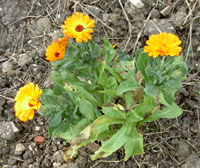
Plantier
Back in 1982, Isabel graduated in biology and biology education. She has been teaching biology, ecology, geology and health ever since, and has never looked back. However, she didn’t plan things this way.
“I always wanted to be a doctor or a researcher,” says Isabel. “But at 17, after a disappointing exam result, I found myself studying biology at university and at the end of my third year, I really needed to start earning money. In Portugal, teaching was a secure career with a fixed salary; research, by contrast, was not very well paid so I decided to train as a teacher. I know now that this was the right decision: I like teaching, and I learn something new from my students every day.” Isabel believes that a day is successful when her lessons work well and she sees a glint of pleasure in her students’ eyes.
So how does Isabel achieve that enthusiastic glint? “One day in October 2004, after the class had analysed some seeds we’d left to germinate, I asked the students: ‘Are we just going to throw these out? With all the space we have outside the school, we could sow them and watch the development of the leaves and flowers – who knows, maybe even some fruit!’ As a result, we now have an outdoor space where we carry out excellent fieldwork, revise for tests, and investigate how the plants develop under different conditions. We have attempted to simulate Mendel’s first experiments, and we have planted 15 fruit trees, with a group of students responsible for each tree. Even previously unmotivated students are now doing well in biology.”
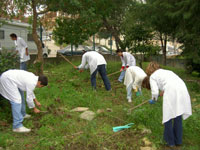
Plantier
Isabel also believes that visits to scientific research institutes can encourage students – and, of course, contact between teachers and scientists is important too. At a course at the European Learning Laboratory for the Life Sciencesw1, Isabel found the close contact with the research institute very beneficial. “It allowed me to update my knowledge. It also showed that, together with teachers, scientific research institutions can create model experiments that can be used in the classroom. By testing the models and giving feedback, teachers can then help to improve them further.”
Isabel has also been lucky enough to travel much further afield in search of teaching ideas. In 2002, she was selected for the International Space Camp (ISC)w2, an annual event held at the US Space & Rocket Center in Huntsville, Alabama, USA. Its motto is ‘Dreaming to teach – teaching to dream’, and its main goal is to unite teachers and students from around the globe, to share experiences and create bonds, enabling them to work together to strengthen and nurture educational systems long after the camp’s week of activities is over.
“In April 2002, I was contacted by Living Science (an agency linked to the Portuguese Ministry of Science, which develops and supports science projects for and by schools) and asked if I’d be interested in taking part in the ISC, with two of my students. Living Science needed an answer more or less immediately, so – it was a bank holiday – I picked up the phone, rang all the students, and decided to go for it, not really knowing what I was letting us in for!”
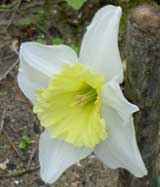
Plantier
All activities revolve around space exploration, ranging from simulated space-shuttle missions using astronaut-training devices to lectures and talks by international astronauts and cosmonauts. Every year, it is attended free of charge by the US Teachers of the Year (the best teacher in each US state), plus one teacher and two students from each of the invited countries (23 countries in 2002); some students also pay to attend. Throughout the whole week, teamwork is a key factor in every activity. Students’ and teachers’ teams have slightly different programmes, as teachers’ activities also involve modules on how to use space exploration in the classroom.
One fun and useful student activity was ‘fizzy tablet rockets’, in which students built rockets out of film canisters filled with water and effervescent antacid tablets. They varied the amount of ‘fuel’ in the rockets, and predicted and investigated the effect on launch time. In the process, they discussed statistics and probability, different types of measurement, and used both fractions and decimals.
At the closing ceremony, Isabel was awarded the ‘Right Stuff’ medal, which meant she could send another student to the ISC in 2003, free of charge. “So that the student would not have to go alone, we managed to raise sponsorship funds to pay for the enrolment of a second student. In 2005, five of my students paid their own enrolment in the ISC.”
When Isabel and her two students, Bruno Pereira and Teresa Ribeiro, returned from the ISC in 2002, they took every opportunity to share their experiences with the rest of the school. As part of the ISC, all teachers had to design a project to apply space science in school. Isabel responded enthusiastically and designed her ideal project – but she still dreams of turning the plan into ambitious reality. She would like to involve all 14- to 19-year-old science, arts and humanities students at the school (about 400 in total) in activities to stimulate creativity and an interest in space exploration.
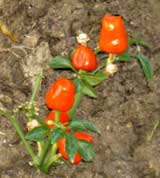
Plantier
Isabel, Bruno and Teresa would make information panels of the activities at the ISC and suggest activities that could be developed at school. Students would select which activities to be involved in and the activities would be shared among teachers of different disciplines, for example:
- The chemistry, physics and mathematics teachers could organise activities for students interested in fizzy tablet rockets, rocket-show quadratics or vector navigation.
- Together with the art and language teachers, students could design mission patches.
- The biology and geology teachers would lead investigations of the physiological changes experienced by astronauts in space, and ‘hydroponics in the classroom’ (growing plants without soil).
Each group of teachers would organise the activities to fit into their syllabus and to meet the interests of the students. The emphasis would be on allowing and encouraging students to do their own research and work co-operatively – and each work group would seek sponsorship to cover the costs of their activities. At the end of the year, all the research, artwork, experiments and results would be presented – and the rockets and balloons would be launched!
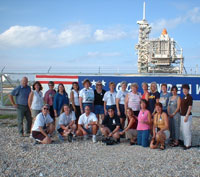
Plantier
The project is based very much on the activities that Isabel and the others did at the ISC. She was particularly impressed in Huntsville by the mission patch activity, in which teams not only designed their picture, but also described the team and its mission. “This team-building idea had a strong impact on me, and I think it would be a very good way to start off each group’s work. In fact, I would make this the one activity that all groups do – the others would vary according to students’ interest, motivation, or subjects studied.”
In terms of practicalities, Isabel is fairly flexible. Involvement in the project could be obligatory or not, carried out within lessons or as an extra activity – either would work. “Thinking up activities would probably not be too hard… The main problem is that I can’t carry out a project like this on my own. It would have to be a joint effort by several teachers, and so far not enough of my colleagues have been willing to embark on such a project.” But Isabel is not deterred: “Although I’ve not yet tried out the full-scale project, I take every opportunity to use all I learnt at the ISC every chance I get, both in my own classes and in special events such as open days at the school.”
Isabel’s dream project not only brings an element of fun into science, but also demonstrates that space exploration unites many disciplines. “I would love to extend this project to schools throughout Portugal – or even beyond – as the basis of an international student-exchange programme!” Does this sound interesting? Would you like to know more? Isabel would be happy to hear from you.
Web References
- w1 – The European Learning Laboratory for the Life Sciences (ELLS) is an education facility to bring secondary-school teachers into a research laboratory. Based at the European Molecular Biology Laboratory in Heidelberg, Germany, ELLS welcomes European teachers to its free three-day practical workshops. Education materials designed together with teachers are available in the ELLS TeachingBASE. See www.embl.org/ells/ for further details.
- w2 – For more information about the International Space Camp, run by the US Space & Rocket Center, see: www.spacecamp.com





